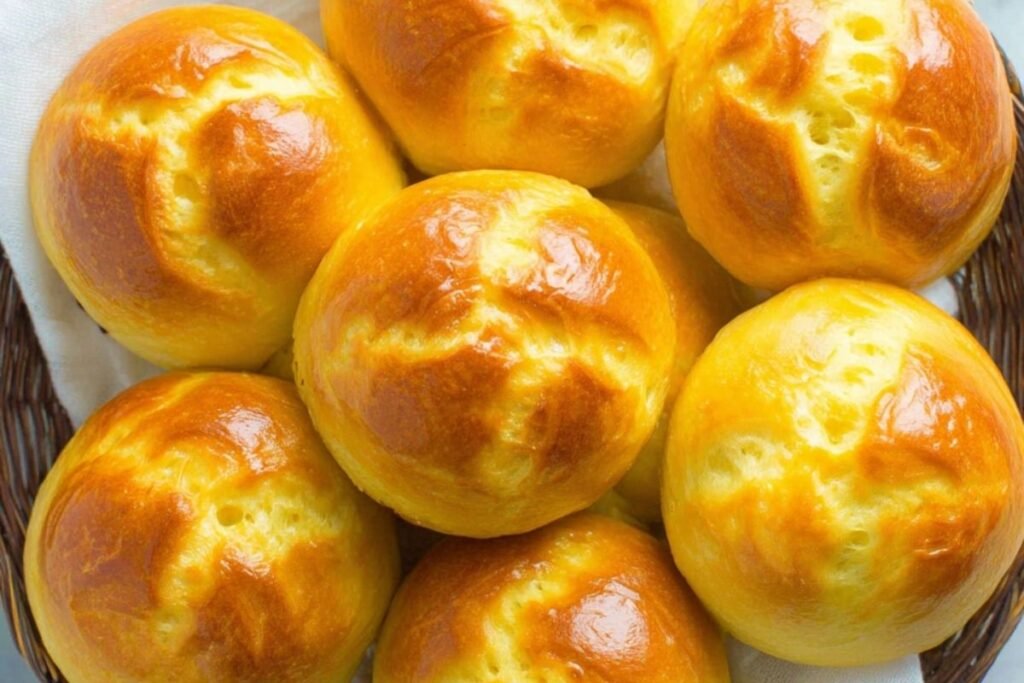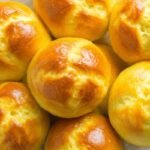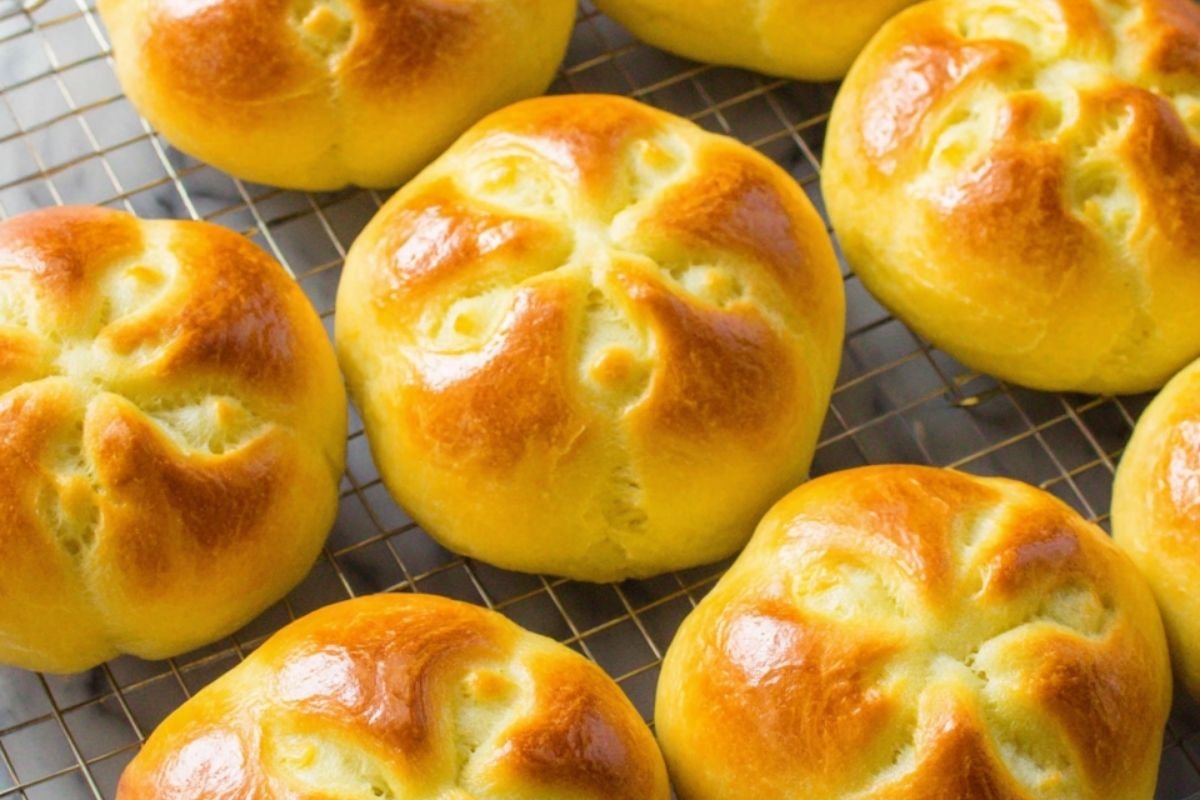There’s a certain magic in the aroma of saffron rising from the oven during the holiday season. In Sweden, that magic comes in the form of Swedish Saffron Buns, known locally as lussekatter or lussebullar. These golden, fragrant buns are as much a part of the Scandinavian Christmas as gingerbread or glögg.
Whether you’re looking to add a traditional Swedish recipe to your holiday table or curious about the cultural roots of this festive treat, you’re in the right place. In this comprehensive guide, we’ll explore the origins of saffron buns, how they’re traditionally enjoyed, the best techniques for baking them, flavorful variations, storage tips, and an FAQ to troubleshoot every common question.
So, roll up your sleeves and prepare to bake the most iconic buns of the Scandinavian season!
📚 Table of Contents
- What Are Swedish Saffron Buns?
- The History and Significance of Lussekatter
- Ingredients Breakdown
- Step-by-Step Recipe Instructions
- Festive Variations of Lussekatter
- How to Serve and Store
- Troubleshooting Tips
- Frequently Asked Questions (FAQs)
- Conclusion
1. What Are Swedish Saffron Buns?
Swedish Saffron Buns, or lussekatter, are lightly sweetened, saffron-infused yeast buns shaped into traditional curled patterns resembling an “S” or figure-eight. These buns are commonly adorned with raisins placed in the swirls and brushed with egg wash for a glossy finish.
They are typically enjoyed on St. Lucia’s Day (December 13) in Sweden, a festival of light during the darkest part of the year. But in recent years, they’ve grown in popularity across the globe for their vibrant color, unique flavor, and deep cultural roots.
Unlike cinnamon rolls or sticky buns, Swedish Saffron Buns are more delicate in sweetness and rely on the distinct flavor and aroma of saffron.
2. The History and Significance of Lussekatter
The tradition of baking and serving saffron buns in Sweden dates back several centuries. While the exact origins are debated, here’s what we know:
St. Lucia’s Day
Celebrated on December 13, St. Lucia’s Day honors Saint Lucia, a young Christian martyr who brought food to persecuted Christians in Roman catacombs, wearing a crown of candles to light her way.
In Sweden, the holiday symbolizes light overcoming darkness. Young girls dress in white robes with red sashes and wear candle-lit crowns, while processions sing traditional songs and distribute saffron buns, coffee, or mulled drinks.
Why Saffron?
Saffron, though expensive, was used historically for its brilliant yellow color, symbolizing light, warmth, and the sun. The buns’ golden hue was thought to repel darkness, evil spirits, and even misfortune.
The Shape of the Buns
“Lussekatter” literally means “Lucia’s cats.” The “S” shape of the bun mimics the curled tail of a cat, and folklore says it was meant to scare off the devil, who took the form of a cat. Raisins placed in the spirals symbolize the eyes of the cat.
3. Ingredients Breakdown
Let’s take a closer look at the traditional components of Swedish Saffron Buns and why each one matters:
- Saffron threads – The soul of this bun. It provides color, floral-earthy flavor, and cultural symbolism.
- Whole milk – Activates the yeast and gives the dough softness.
- Active dry yeast – Leavens the dough and creates a light, fluffy bun.
- All-purpose flour – The structure and base of the bun.
- Unsalted butter – Adds moisture and richness.
- Granulated sugar – Sweetens the dough without overpowering.
- Eggs – Enrich the dough and give the buns a tender crumb.
- Salt – Balances flavors and strengthens the dough.
- Raisins – Used as decorations for eyes in the curled parts.
- Cardamom (optional) – A traditional spice in Swedish baking that complements saffron beautifully.
- Egg wash – Brushed over the buns to give a shiny, golden finish.
4. Step-by-Step Recipe Instructions

🍞 Ingredients (U.S. measurements)
- 1 cup whole milk
- 1/4 teaspoon saffron threads
- 1/2 cup unsalted butter, softened
- 2 1/4 teaspoons active dry yeast
- 1/2 cup granulated sugar
- 1/2 teaspoon salt
- 1 large egg (plus 1 for egg wash)
- 3 to 3 1/2 cups all-purpose flour
- 1/2 cup raisins (optional)
- 1 teaspoon ground cardamom (optional)
🧁 Directions
Step 1: Infuse the Saffron
Warm the milk (do not boil) and crumble in the saffron threads. Let sit for 10–15 minutes. This brings out the full color and flavor of the saffron.
Step 2: Activate the Yeast
In a large bowl, combine the saffron milk (cooled slightly to about 110°F), sugar, and yeast. Let sit for 5–10 minutes until it starts to foam.
Step 3: Make the Dough
Add the softened butter, salt, egg, and cardamom (if using). Mix in the flour, starting with 2 ½ cups, and gradually add more until a soft, slightly sticky dough forms.
Step 4: Knead
Knead the dough on a floured surface for about 8–10 minutes until smooth and elastic. Place in a greased bowl, cover, and let rise for 1–1½ hours until doubled.
Step 5: Shape the Buns
Divide dough into 12–16 pieces. Roll each into a rope and curl the ends in opposite directions to form an “S” shape. Press a raisin into the center of each curl.
Step 6: Second Rise
Place buns on a baking sheet lined with parchment. Cover loosely and let rise for another 30–40 minutes.
Step 7: Egg Wash and Bake
Preheat oven to 375°F. Beat one egg and brush it over the buns. Bake for 12–15 minutes or until golden brown.
Step 8: Cool and Serve
Cool slightly before serving. Enjoy warm with coffee or tea.
5. Festive Variations of Lussekatter
While the classic saffron bun is beloved as-is, there are fun and festive ways to customize:
- Filled Lussekatter – Add almond paste or vanilla custard inside for a richer treat.
- Vegan Version – Use dairy-free milk and vegan butter; replace egg with applesauce or a flax egg.
- Spelt Flour Dough – A hearty twist that pairs beautifully with saffron’s earthiness.
- Cardamom Sugar Topping – Instead of raisins, sprinkle with coarse sugar and a hint of cardamom for crunch.
These variations still celebrate the essence of Swedish saffron buns, but bring a personalized spin.
6. How to Serve and Store
Serving Suggestions:
Serve warm with coffee, tea, or hot cocoa. They’re a natural fit for breakfast, fika, or dessert.
Storing:
Keep buns in an airtight container at room temperature for up to 3 days. Reheat gently in the microwave or oven to refresh.
Freezing:
Swedish saffron buns freeze well! Once cooled, place in a zip-top freezer bag and freeze for up to 1 month. Thaw at room temperature and warm before serving.
7. Troubleshooting Tips
Buns too dry?
Could be over-baking or too much flour. The dough should be soft and slightly sticky before proofing.
Didn’t rise enough?
Check the yeast freshness and make sure your kitchen is warm enough. Let the dough rise until it doubles.
Buns lost shape?
Make sure to chill dough slightly before shaping, and don’t overproof before baking.
Saffron flavor missing?
Make sure you infused the saffron long enough in warm milk. Crushing threads before adding can boost flavor.
8. Frequently Asked Questions (FAQs)
Q: What does saffron taste like in buns?
It’s slightly floral, earthy, and luxurious. It’s the defining flavor of Swedish saffron buns.
Q: Can I make these without saffron?
You could use turmeric for color, but the flavor won’t be the same. Saffron is essential for authentic taste.
Q: Are these buns very sweet?
Not overly. They’re mildly sweet, designed to be enjoyed with hot drinks.
Q: Can I prepare the dough ahead of time?
Yes. Prepare and let it rise overnight in the fridge. Shape and bake the next day.
Q: Why are they shaped like an “S”?
Traditionally, the “S” shape resembles a curled cat tail, symbolic in Swedish folklore.
9. Conclusion
Swedish Saffron Buns are a celebration of light, warmth, and tradition during the darkest season of the year. From the cultural beauty of St. Lucia’s Day to the scent of saffron filling your home, these buns connect generations through tradition, flavor, and togetherness.
Whether you’re baking them for the first time or making them a yearly tradition, this complete guide arms you with everything you need to perfect your lussekatter. Shape them, bake them, and share them with the ones you love.
Print
Authentic Swedish Saffron Buns: Ultimate Lussekatter Guide 🎄
Ingredients
-
1 cup whole milk
-
1/4 teaspoon saffron threads
-
1/2 cup unsalted butter, softened
-
2 1/4 teaspoons active dry yeast
-
1/2 cup granulated sugar
-
1/2 teaspoon salt
-
1 large egg (plus 1 for egg wash)
-
3 to 3 1/2 cups all-purpose flour
-
1/2 cup raisins (optional)
-
1 teaspoon ground cardamom (optional)
Instructions
Step 1: Infuse the Saffron
Warm the milk (do not boil) and crumble in the saffron threads. Let sit for 10–15 minutes. This brings out the full color and flavor of the saffron.
Step 2: Activate the Yeast
In a large bowl, combine the saffron milk (cooled slightly to about 110°F), sugar, and yeast. Let sit for 5–10 minutes until it starts to foam.
Step 3: Make the Dough
Add the softened butter, salt, egg, and cardamom (if using). Mix in the flour, starting with 2 ½ cups, and gradually add more until a soft, slightly sticky dough forms.
Step 4: Knead
Knead the dough on a floured surface for about 8–10 minutes until smooth and elastic. Place in a greased bowl, cover, and let rise for 1–1½ hours until doubled.
Step 5: Shape the Buns
Divide dough into 12–16 pieces. Roll each into a rope and curl the ends in opposite directions to form an “S” shape. Press a raisin into the center of each curl.
Step 6: Second Rise
Place buns on a baking sheet lined with parchment. Cover loosely and let rise for another 30–40 minutes.
Step 7: Egg Wash and Bake
Preheat oven to 375°F. Beat one egg and brush it over the buns. Bake for 12–15 minutes or until golden brown.
Step 8: Cool and Serve
Cool slightly before serving. Enjoy warm with coffee or tea.
